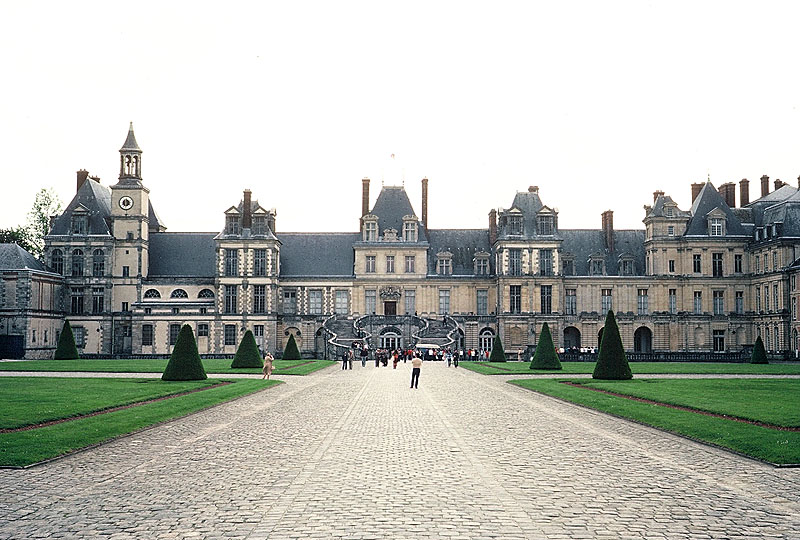
Chateau de Fontainebleau’s entrance and façade. The actual palace was begun by Francis 1 drawn by the abundant game, which thrived in the vast forest. From the days of the Capetian kings to the time of Napoleon III, the Palace of Fontainebleau has been lived in, added to, and altered by the sovereigns of France. Napoleon Bonaparte preferred this to Versailles, because he was free of the overwhelming presence of Louis IV, his most formidable predecessor. in the quest for glory. Napoleon called Fontainebleau “the house for Eternity,” furnished it in the Empire style and set about altering it for himself, for Josephine, and for Pope Pius VII. A taste for natural surroundings along with its role as a military base for cavalry led to the growth of the time and for two decades until 1967, it served as the home and headquarters to NATO.
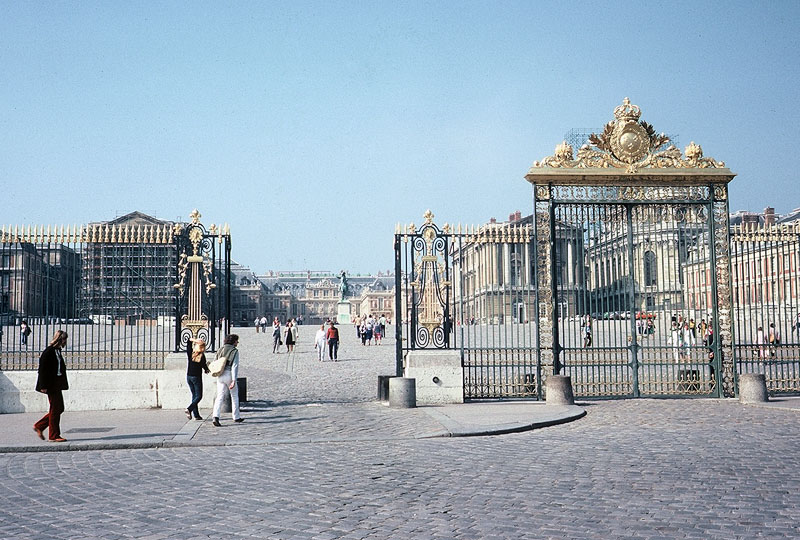
View of the Golden gates of the outside eastern entrance to Versailles, residence of the Louis XIV or the Sun King (1638–1714). In 1661 Louis XIV renovated the small hunting lodge at Versailles by enlisting the architect Louis Le Vau to build the palace and also painter Charles Le Brun who painted much of the interior and designed furniture. André Le Nôtre became the landscape architect.
The palace is over a half a mile long and has enormous wings. The entire grounds and complex including the gardens and Trianon buildings, a greatly harmonious composition of building and landscape, is the ultimate example of French Classicism. When Louis and his court lived here, France ranked above all nations in art, in literature, in war, and in statesmanship. The extravagance of court life at this time later added to serious financial problems and other factors from Louis’s reign led to the French revolution.
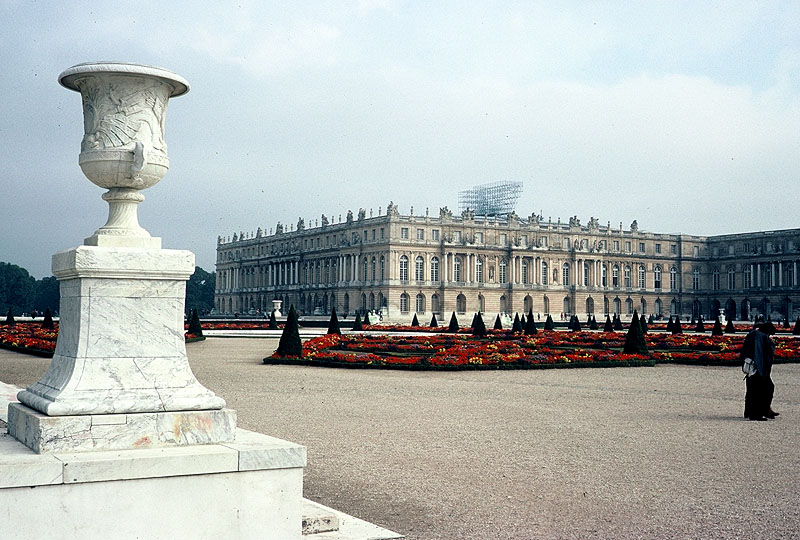
Partial exterior of south wing of Versailles Palace at south parterre. Versailles was the residence of King Louis IV (1638–1714) who built the palace around 1670. The palace is over a half a mile long and has enormous wings. The entire grounds and complex including the gardens and Trianon buildings, a greatly harmonious composition of building and landscape, is the ultimate example of French Classicism. When Louis and his court lived here, France ranked above all nations in art, in literature, in war, and in statesmanship.
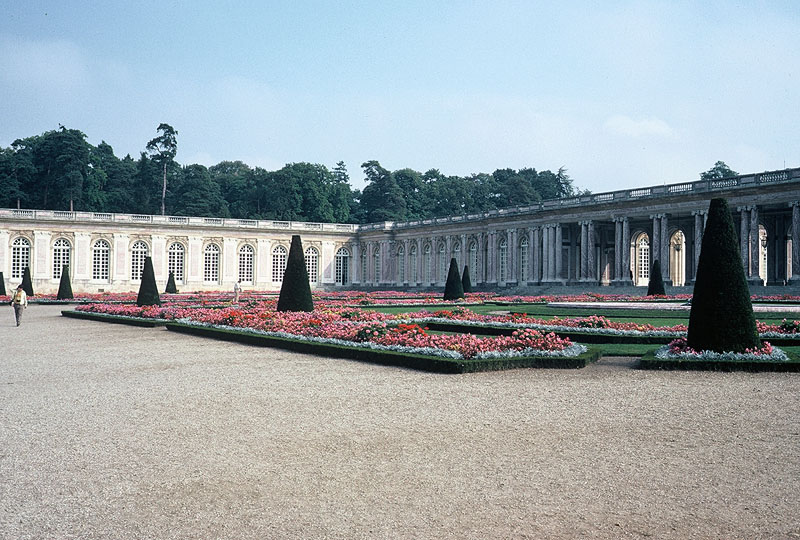
Le Grand Trianon building on grounds of Versailles. The single-story stone and pink marble building was intended as a chateau away from chateau for Louis XIV. Here the Sun King could only be reached by boat from the Grand Canal. The palace, which consists of two wings joined by a large central porch, was designed by Mansart and erected in 1687. The more simple formal gardens behind the colonnaded porch are a relief from the rest of Versaille’s showy bosquets. The mini-chateau was inhabited by Napoleon and his second wife. President Charles de Gaulle installed presidential apartments and rooms after World War II for visiting heads of state.
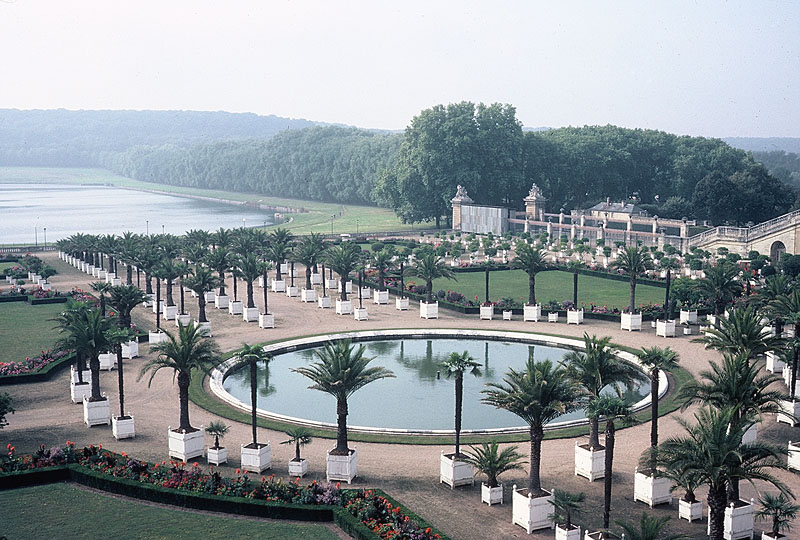
View of Orangery section on south grounds of Versailles. This is a picture of the southeastern area of the grounds behind the southern Parterre Sud off the south wing. These are actually orange trees and originally there were many dozens of them.
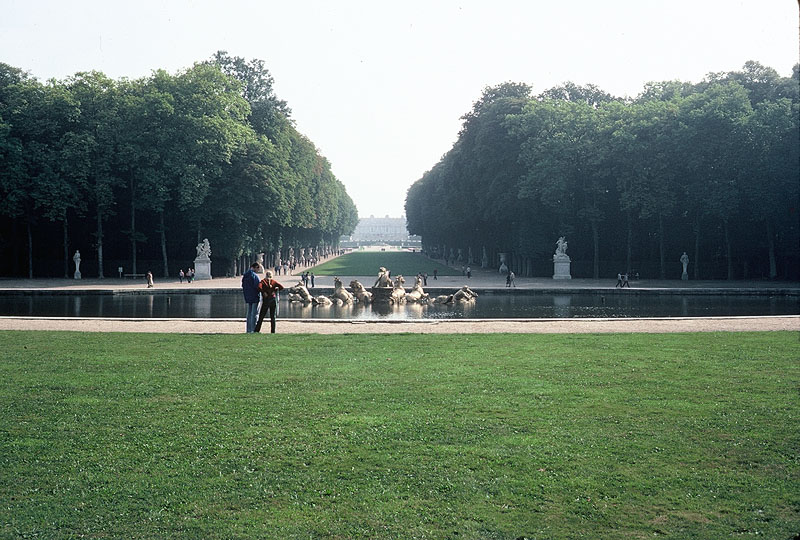
View of gardens and Grand Canal at Versailles. The elaborate gardens of Versailles were designed by Andre Le Nôtre. This photo probably looks west from the Bassin d’Apollon (basin of Apollo) toward the extense of the Grand Canal which is made into a cross by Le Petit Canal (also known as Axe de Soleil).
The basins, fountains, and statues at Versailles are perfectly integrated with nature. The grand perspective of the east-west axis retraces the path of the sun from the Latona Basin and fountain to the Apollo basin continuing along the Grand Canal. Charles Le Brun designed the sculptures for the park.
